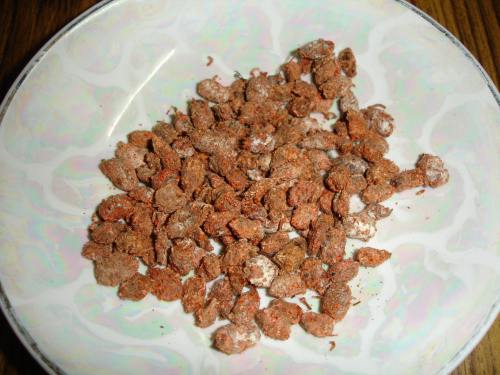|
Allothrombium Polikarpi
''Allothrombium polikarpi'' is a species of mite belonging to the family Trombidiidae Trombidiidae, also known as red velvet mites, true velvet mites, or rain bugs, are small arachnids (eight-legged arthropods) found in plant litter and are known for their bright red color. While adults are typically in length, some, such as t ..., first described from Greece.Haitlinger, R. Y. S. Z. A. R. D. "New records of mites (Acari: Prostigmata: Erythraeidae, Trombidiidae) from Samos, Greece, with descriptions of six new species." Systematic & Applied Acarology 11 (2006): 107-123. References Further reading * Haitlinger, R. "New records of mites (Acari: Prostigmata: Erythraeidae, Eutrombidiiddae, Microtrombidiidae, Podothrombiidae, Trombidiidae) from Bulgaria, Macedonia and Romania." Zeszyty Naukowe Uniwersytetu Przyrodniczego we Wrocławiu-Biologia i Hodowla Zwierzat 58.572 (2009): 49-60. * Wohltmann, Andreas, and Joanna Makol. "A redescription of Allothrombium meridionale Berlese, ... [...More Info...] [...Related Items...] OR: [Wikipedia] [Google] [Baidu] |
Mite
Mites are small arachnids (eight-legged arthropods). Mites span two large orders of arachnids, the Acariformes and the Parasitiformes, which were historically grouped together in the subclass Acari, but genetic analysis does not show clear evidence of a close relationship. Most mites are tiny, less than in length, and have a simple, unsegmented body plan. The small size of most species makes them easily overlooked; some species live in water, many live in soil as decomposers, others live on plants, sometimes creating galls, while others again are predators or parasites. This last type includes the commercially destructive ''Varroa'' parasite of honey bees, as well as scabies mites of humans. Most species are harmless to humans, but a few are associated with allergies or may transmit diseases. The scientific discipline devoted to the study of mites is called acarology. Evolution and taxonomy The mites are not a defined taxon, but is used for two distinct groups of arachnids ... [...More Info...] [...Related Items...] OR: [Wikipedia] [Google] [Baidu] |
Trombidiidae
Trombidiidae, also known as red velvet mites, true velvet mites, or rain bugs, are small arachnids (eight-legged arthropods) found in plant litter and are known for their bright red color. While adults are typically in length, some, such as the genus ''Dinothrombium'', may reach up to . Their life pattern is in stages similar to other members of the Prostigmata: egg, pre-larva, larva, protonymph, deutonymph, tritonymph and adult (male or female). They usually have only one breeding cycle per year.Zhang, Zhi-Qiang (1998) Biology and ecology of trombidiid mites (Acari: Trombidioidea) Experimental & Applied Acarology 22:139–15PDF/ref> They are active predators as grown adults. As early instars they are often parasites of insects and other arachnids. One well known species from Europe, Asia, and North Africa is ''Trombidium holosericeum''. The systematics of this group has been in flux and many former subfamilies of this are now raised to families within the Trombidioidea. L ... [...More Info...] [...Related Items...] OR: [Wikipedia] [Google] [Baidu] |
Trombidiformes
The Trombidiformes are a large, diverse order of mites. Taxonomy In 1998, Trombidiformes was divided into the Sphaerolichida and the Prostigmata. The group has few synapomorphies by which it can be defined, unlike the other major group of acariform mites, Sarcoptiformes. Its members include medically important mites (such as '' Demodex'', the chiggers, and scrub-itch mites) and many agriculturally important species, including the spider mites (Tetranychidae). The superfamily Eriophyoidea, traditionally considered members of the Trombidiformes, have been found to be basal mites in genomic analyses, sister to the clade containing Sarcoptiformes and Trombidiformes. The 2004 classification retained the two suborders, comprising around 125 families and more than 22,000 described species. In the 2011 revised classification, the order now contains 151 families, 2235 genera Genus ( plural genera ) is a taxonomic rank used in the biological classification of living and fo ... [...More Info...] [...Related Items...] OR: [Wikipedia] [Google] [Baidu] |
Arachnids Of Europe
Arachnida () is a class of joint-legged invertebrate animals (arthropods), in the subphylum Chelicerata. Arachnida includes, among others, spiders, scorpions, ticks, mites, pseudoscorpions, harvestmen, camel spiders, whip spiders and vinegaroons. Almost all adult arachnids have eight legs, although the front pair of legs in some species has converted to a sensory function, while in other species, different appendages can grow large enough to take on the appearance of extra pairs of legs. The term is derived from the Greek word (''aráchnē'', 'spider'), from the myth of the hubristic human weaver Arachne, who was turned into a spider. Almost all extant arachnids are terrestrial, living mainly on land. However, some inhabit freshwater environments and, with the exception of the pelagic zone, marine environments as well. They comprise over 100,000 named species, of which 47,000 are species of spiders. Morphology Almost all adult arachnids have eight legs, unlike adult ins ... [...More Info...] [...Related Items...] OR: [Wikipedia] [Google] [Baidu] |
_Lorryia_formosa_2_edit.jpg)


